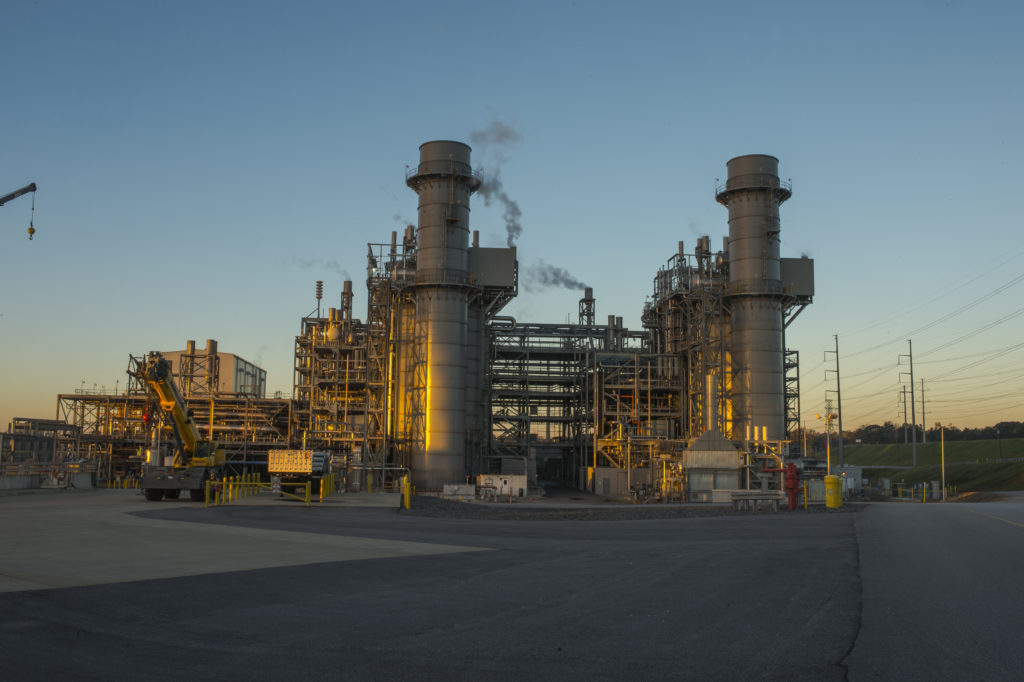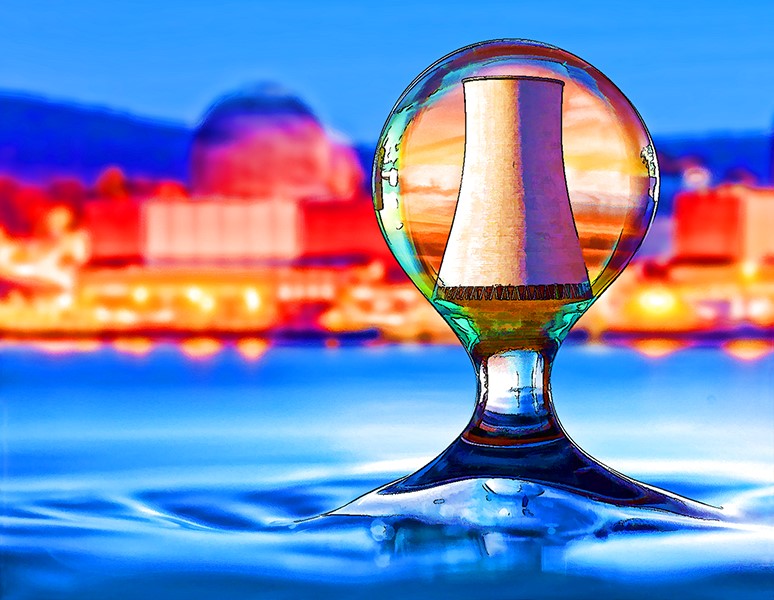New R&D Center Accelerates Development of Power Plant Cooling Systems That Use Less Water
With a growing global population and many competing uses for limited water resources across the United States, wise use and conservation are more important today than ever before. To accelerate development of new technologies that help reduce water use and improve efficiency in the power generation sector, Southern Company, its Georgia Power subsidiary, and EPRI have established the Water Research and Conservation Center at Plants Bowen and McDonough-Atkinson.
“A commitment to impactful research and development is shared by all of our operating companies, including Georgia Power,” said Rebecca Osteen, research engineer for Southern Company. “Water use is a long-term, strategic issue for power generation, and it is important that we invest in and develop technologies that require less water without compromising service for customers.”
About 43% of all thermoelectric power plants in the United States use once-through cooling systems. These withdraw water from rivers, lakes, and other nearby sources, circulate it to absorb heat from steam in condensers, and discharge nearly all of the heated water back to its source.
About 42% of thermoelectric plants in the U.S. are cooled by open recirculating systems—more commonly known as cooling towers. Before returning water to nearby sources, these systems reduce the volume and temperature of water by recirculating it through cooling systems to dissipate most of the heat to the atmosphere through evaporation. Open recirculating systems withdraw much less water relative to once-through cooling systems and are widely used in new power plants, but they consume more water because of evaporation in cooling towers. According to an EPRI study, recirculating cooling systems in the U.S. consume an average of nearly 3 billion gallons per day.
Dry cooling and hybrid cooling systems require further development to be as cost-effective as open recirculating systems. According to the U.S. Energy Information Administration, fewer than 2% of U.S. power plants use these technologies.
“Most cooling systems at power plants rely on fresh water to be available all the time,” said EPRI Project Manager Jeffery Preece. “In the U.S., that translates into about 40% of all freshwater withdrawn, which is about the same as for agriculture. The difference is that power plants with open recirculating systems return about 96% of that water to its source. That said, EPRI recognizes the importance of power generation resiliency and anticipates that challenges with freshwater availability will become more common.”

Accelerated Research Needed
Entrepreneurs, scientists, and diverse organizations—such as the U.S. Department of Energy, the National Science Foundation, and the Asia Pacific Economic Cooperation—are conducting R&D to reduce cooling technologies’ freshwater consumption without significantly impacting power plant efficiency. Innovation is progressing, but commercializing the technologies has proven challenging. A research venue is needed to accelerate technology progression from pilot stage to commercial operation.
“There’s a lot of early-stage research in small-scale laboratory settings,” said Preece. “This work needs to be applied on a much larger scale to simulate power plant conditions and identify pathways for commercialization.”
In addition to developing the most effective technologies, success depends on incorporating them into operating power plants. “When we integrate and optimize these technologies, we need to account for the complexity associated with plant components, systems, and processes,” said Preece. “The technologies need to provide more efficient cooling without increasing a plant’s operational costs or hurting performance.”
A New R&D Center to Fill the Void
The Water Research and Conservation Center aims to support innovators of cooling and heat transfer technologies in the early stages of development. Cooling technologies are the large systems that cool the steam turbine exhaust in a condenser, while heat transfer technologies are systems and components that enable more efficient heating, cooling, or both. The new center is an expansion of the Water Research Center at Georgia Power’s Plant Bowen, which has been operating for five years. Construction is underway at Georgia Power’s Plant McDonough-Atkinson, and the expanded center is expected to open in early 2019.

The new center’s design draws on a comprehensive review of research and development initiatives around the world, including facilities used by manufacturers of power plant cooling and heat transfer technologies.
“We have done a global tour of R&D facilities and are integrating the best practices and making improvements of our own,” said Preece.
The center will simulate power plant conditions at a scale significantly larger than laboratories, though much smaller than a full-scale power plant. Tests will incorporate plant infrastructure such as shell-and-tube heat exchangers, cooling towers and systems, a climate control and simulation system, and access to cooling water.
“We will have equipment that simulates various heat transfer processes in a power plant, cooling and heat transfer loops for testing new technologies, and control loops for comparing the performance with that of today’s open recirculating and dry cooling systems,” said Preece. “The scale is small enough to enable accurate testing and large enough so that the results can be reasonably applied to operational power plants.”
Coatings, Materials, Chemicals, Sensors, Systems, and More
As the center’s operator and facilitator, EPRI will work with technology developers and utilities to develop test plans and protocols, drawing on its extensive R&D in the following areas:
- Use of alternative water sources in power plants
- Reuse of water in open recirculating systems
- Technologies that reduce evaporative water losses in open recirculating systems
- Technologies that improve the efficiency and reduce the cost of dry cooling systems
- Hybrid systems that combine the cost and performance of wet cooling with the water efficiency of dry cooling
“Power plants have a long history of using water that is degraded and would otherwise require extensive treatment for agricultural, municipal, or industrial use, and we expect this to become more common,” said Preece. “For example, when desalination plants use traditional reverse osmosis to treat brackish groundwater, only 50% to 75% of the resulting water is usable for drinking water. The remaining 25% to 50% is wastewater. Power plants are exploring the use of that wastewater as an alternative to fresh water or groundwater.”
Initially, the center’s research plans include investigation of:
- Coatings and nanomaterials applied to condenser tubes and cooling towers to improve heat transfer
- Chemical treatment to prevent or mitigate corrosion of cooling system components
- Systems, materials, sensors, and techniques to reduce the volume of water needed for cooling
When considering new heat transfer and cooling technologies, plant operators need answers to site-specific questions about installing new equipment and retrofitting existing systems. “You have to think about the technology from the perspectives of mechanical design, fabrication, and installation,” said Preece. “Is this a system that stands alone or does it integrate with other systems? If it has to be integrated, what are the technical and economic considerations? Do you have a robust supply chain, accurate mechanical design, and realistic installation plans?”
EPRI will provide utilities and technology developers with guidance on these issues. By simulating power plant conditions and scenarios often not accounted for in early-stage R&D, the center will help developers better understand deployment challenges and implement solutions for timely commercialization.
“The technology aspect could be straightforward, but the economics, design, and integration are not,” said Preece. “The integration is key to having the technology do what it is supposed to do.”
The center plans to host numerous utilities and developers and test diverse new technologies at a larger scale than previous research. According to Osteen, these attributes were a big draw for Southern Company’s participation. “This effort helps us understand challenges that utilities across the country are facing,” she said. “In the western U.S., utilities have put in more expensive air-cooled systems that have hurt plant efficiency. We haven’t had to do that, but we want to identify technologies now so that we have practical, viable options in the future.”
“The center will help developers and utilities identify accelerated pathways to commercialization,” said Preece. “We intend to facilitate research on many aspects of cooling systems while advancing the science and technology.”
Key EPRI Technical Experts:
Jeffery Preece
For more information, contact techexpert@eprijournal.com.
Additional Resources:
- Water Use and Availability Technology Innovation Resource Guide
- Water Use for Electric Power Generation
- Power Plant Cooling System Overview: Guidance for Researchers and Technology Developers
- Cooling System and Heat Transfer R&D Test Center (detailed project description and background)
- Cooling System and Heat Transfer Research Test Center (brief project description)
Artwork by Craig Diskowski/Edge Design


